Surabaya, Java
We learned about the history of East Java at the peak of the Majapahit Empire while exploring sites in Trowulan Mojekerto, the former capital of the kingdom. Museums, ruins, temples and more.
Approaching Java at sunrise, the peak of a volcano was the only part of the landscape visible, a constant reminder that Indonesia is one of the most active regions in the Ring of Fire.
Fishing boats dotted the Java Sea.
And ships waited to pass through the narrows.
We are approaching Surabaya, East Java, Indonesia, our final port of call before sailing to Southeast Asia. We’re doing a 6.5-hour, Regent-included tour called TROWULAN HISTORICAL SITES. Our itinerary indicates that we will visit the Trowulan Museum, view the ruins of a 14th-century gate, and then walk through the medieval Candi Tikus temple. Following these visits, we’ll stop for lunch and then return to our ship.
We are at the tail end of Java’s rainy season, which runs from the end of November to April. Even so, it is sunny and partly cloudy. We are visiting on a Saturday, but the streets and sidewalks of Java are still crowded. We are traveling in a caravan of five tour buses on our way to the historical sites. To ensure safe and timely navigation of the roads, each bus is accompanied by two drivers and two tour guides. Our string of buses is also escorted by a police unit to expedite our travel.
Java is the second-largest island in Indonesia, with a population of approximately 4 million. As we travel east along limited-access highways, we watch the scenery pass by.
Our guide speaks as we head towards our first stop, a 90-minute ride. “We are a happy people,” he announces. “We wake up at 4 AM, we pray at 4:30 every morning, then the housewife cleans the house and makes breakfast for the husband and children. We eat breakfast at 6:30 AM. Then, the happy housewife goes to the traditional market. She speaks the local dialect and gets the best price. She prepares lunch and dinner. She cleans the house again.”
We pass by dozens of mosques, captivated by the various color schemes and tile patterns—blue and green, green and cream, metallic gold with sky blue trim. We glimpse the Great Mosque of Surabaya, the national mosque, a sprawling complex featuring a bright blue central dome surrounded by four smaller domes and a minaret. We pass by 46-story apartment buildings, and our guide informs us, “They are for foreigners. We have no land for houses.” We cross a river and spot gray water buffalo in the adjacent wetlands. We pass small rural homes, and I notice an elderly woman raking her front yard, smoothing a pattern into the gray sand. (I recall the sand tray I played with as a child—a shoebox-sized tray with a tiny rake and black pebbles).
We pass rice fields, and I watch the farmers wading through the hip-deep water, tending their crops. While we noticed Hindu shrines in every plot of farmland in Bali, here we see the more familiar scarecrow and colorful streamers. We pass fields of corn and acres of banana trees, as well as irrational canals with ladders strategically placed across the gaps, acting as makeshift bridges. We drive through a small village, and I see a man standing like a statue next to a market stall, his body completely painted in metallic silver. (I think of the street artist I saw in NYC, who mimicked the Statue of Liberty and also wore silver body paint.) We pass a woman riding a bicycle that has been transformed into a mobile market stall, with bread items piled high on an A-frame shelving unit attached to the bike seat. We pass schools and see children in uniform playing in courtyards—even though it is Saturday, the children are in school, but only until noon.
We have not even reached our first site, and I already feel that we have a better understanding of East Java.
Arriving at the Trowulan Museum, we navigate through the crowds and proceed up the steps into the museum, where we can study exhibits both indoors and outdoors, all in the 90-degree F heat and high humidity. Some of us cope better than others. This is quite a strenuous excursion, and the provided excursion description seems misleading. Sherpa and I are fine, as we came equipped with hats and small fans. Half the group waits in a shaded pavilion while we continue to follow our guide.
We learned about the history of East Java during the height of the Majapahit Empire. It is the only site in Indonesia from the Hindu-Buddhist classical era, which ended in the early 1700s.


The museum showcases numerous excavated artifacts—such as reliefs of deities, water spouts shaped like humans, ancient coins, and intricately carved pedestals. Our guide is very earnest in his explanations, though we encounter some language barriers. We stay on the fringes of our group and independently examine the items that interest us the most.
I was fascinated by several story panels. This one features what appears to be a mythical creature riding a sea serpent.
Next, we drive to the historical monument Candi Tikus, a ritual bathing place discovered in 1914 by construction workers who were digging nearby. The main feature of the bath is a brick replica of the mythological Mount Meru, a sacred site for both Hindus and Buddhists. The sculptured gardens looked picture-perfect. The fountain was partially filled with rainwater, its only source of water. During the dry season, the fountain remains empty.
Our final stop is at the remains of the 14th-century Bajang Ratu gateway. Constructed from red brick and volcanic stone, the gateway was once linked to a wall that safeguarded a sacred building. The ancient ruins extend from the central structure and are covered by a plastic protective covering. Many details of the carvings remain visible, including the faces of the protectors. Once again, the garden setting is in pristine condition, creating a park-like atmosphere.
Several families were visiting, including one that had brought their young children and a picnic lunch. The children approached us, eager to meet “foreigners” and practice their basic English. One young boy was wearing a T-shirt with the slogan “Crazy Dude” on the front. When I pointed to his shirt and asked if he was a “crazy dude,” his parents had to explain. Once he understood, he laughed delightedly and nodded vigorously. It was a brief moment of joy and connection that I’ll remember.
Following our visits, we went to a local upscale shopping mall, Sunrise Mall, which has an attached hotel and restaurant. We had a buffet-style lunch that was adequate. On our return bus ride to the port, our guide explained, “We have hot and spicy food- delicious food. Too spicy for you. We give you nice Americanized food so you like it.”
We arrive at the cruise terminal around 3:45 PM, and we must be back on board by 4:30 PM. We have a handful of Indonesian Rupiah that we want to spend before we leave Indonesia. Counting our bills, we find we have 1,200,000 Rupiah. As one of our clever granddaughters asked when I told her how much money we had, “Yeah, but how much is that in American dollars?” “Well, Brooklyn, that’s about $70 USD.”
With that million-plus rupiah, we bought six different-style purses and bags from the two people in the photograph. We gave them 700,000 rupiah and told them to keep the change. Their gratitude was overwhelming. We stopped at several other booths, purchasing a few felted birds for my art altar and a dozen coin purses for Christmas presents.
We still had about 150,000 rupiah to spend when the port agent approached us. “You on the ship?” he asked. When we nodded, he said, with some urgency, “The pilot is on board. We are going.” We checked our watches. It was 4:25 PM, and we still had five minutes, but if the ship was ready to go, we weren’t going to cause a delay intentionally. We left with money still in our pockets, went through ship security, and received a smile from the crew. “You’re the last to board.”
It was 4:28 PM. Within minutes, the ship had unmoored, and we were underway. We are now sailing the Java Sea, crossing the equator, and will arrive in Singapore in two days.

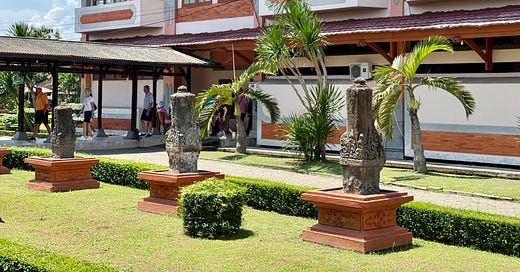


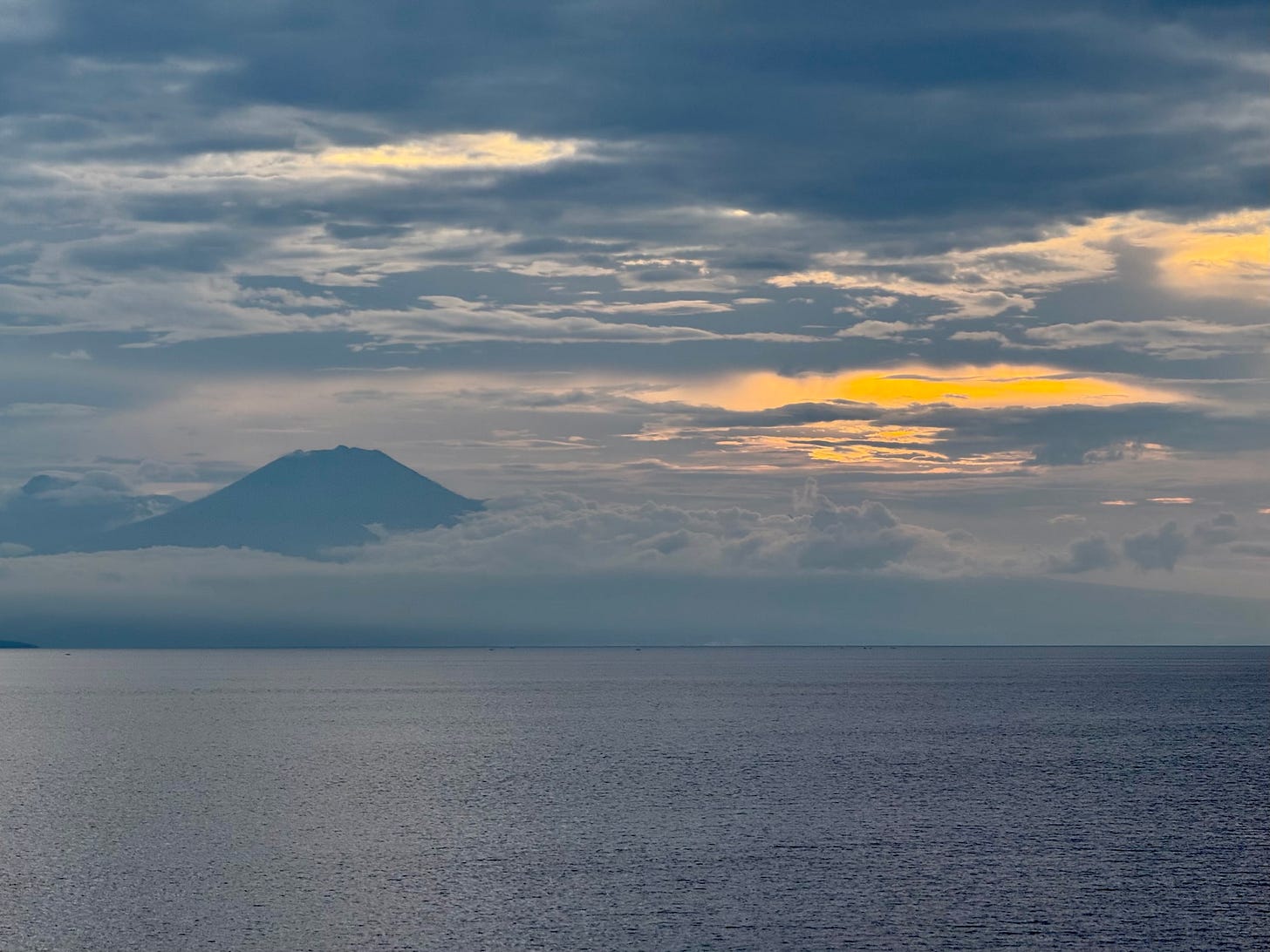
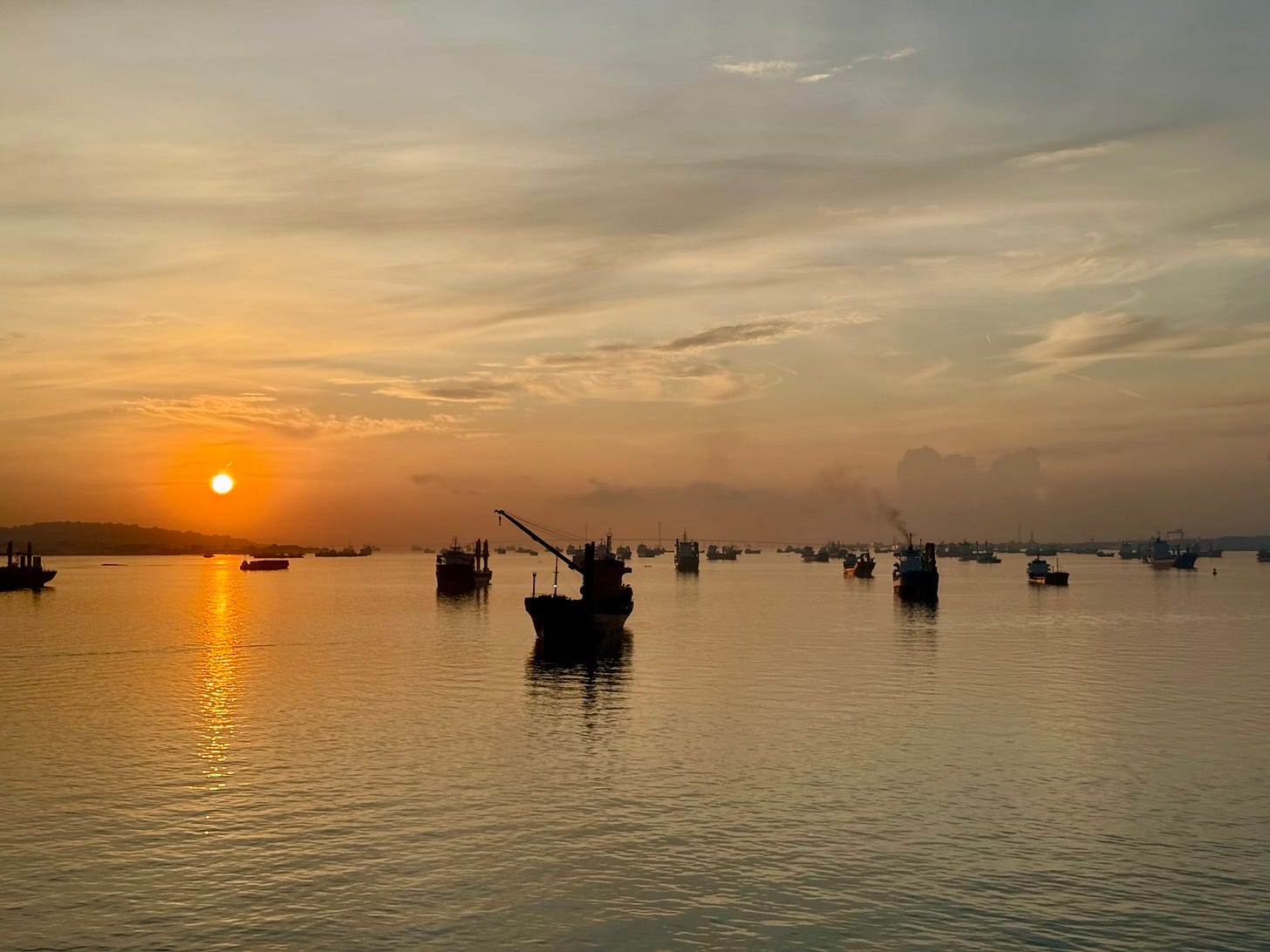



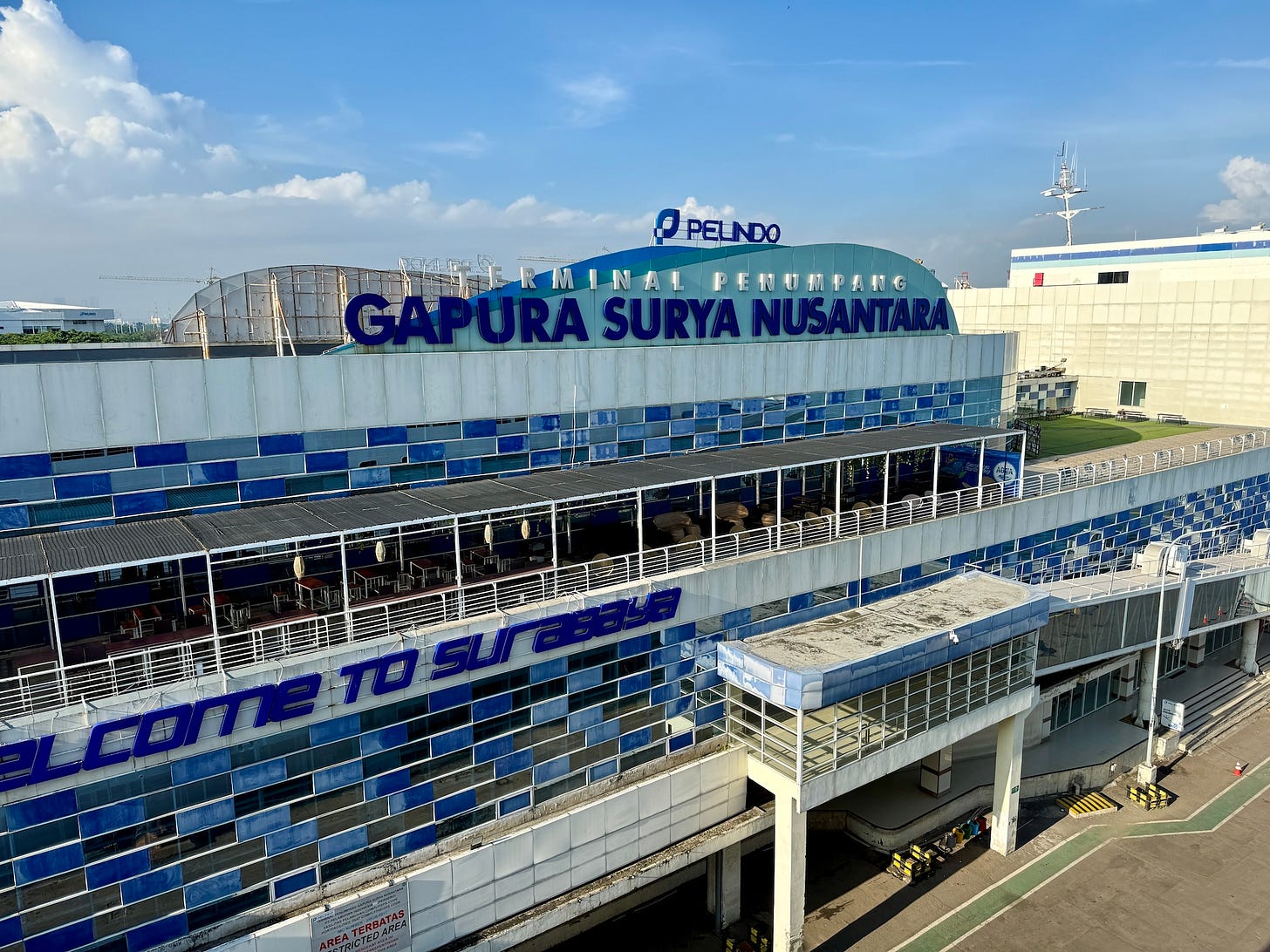
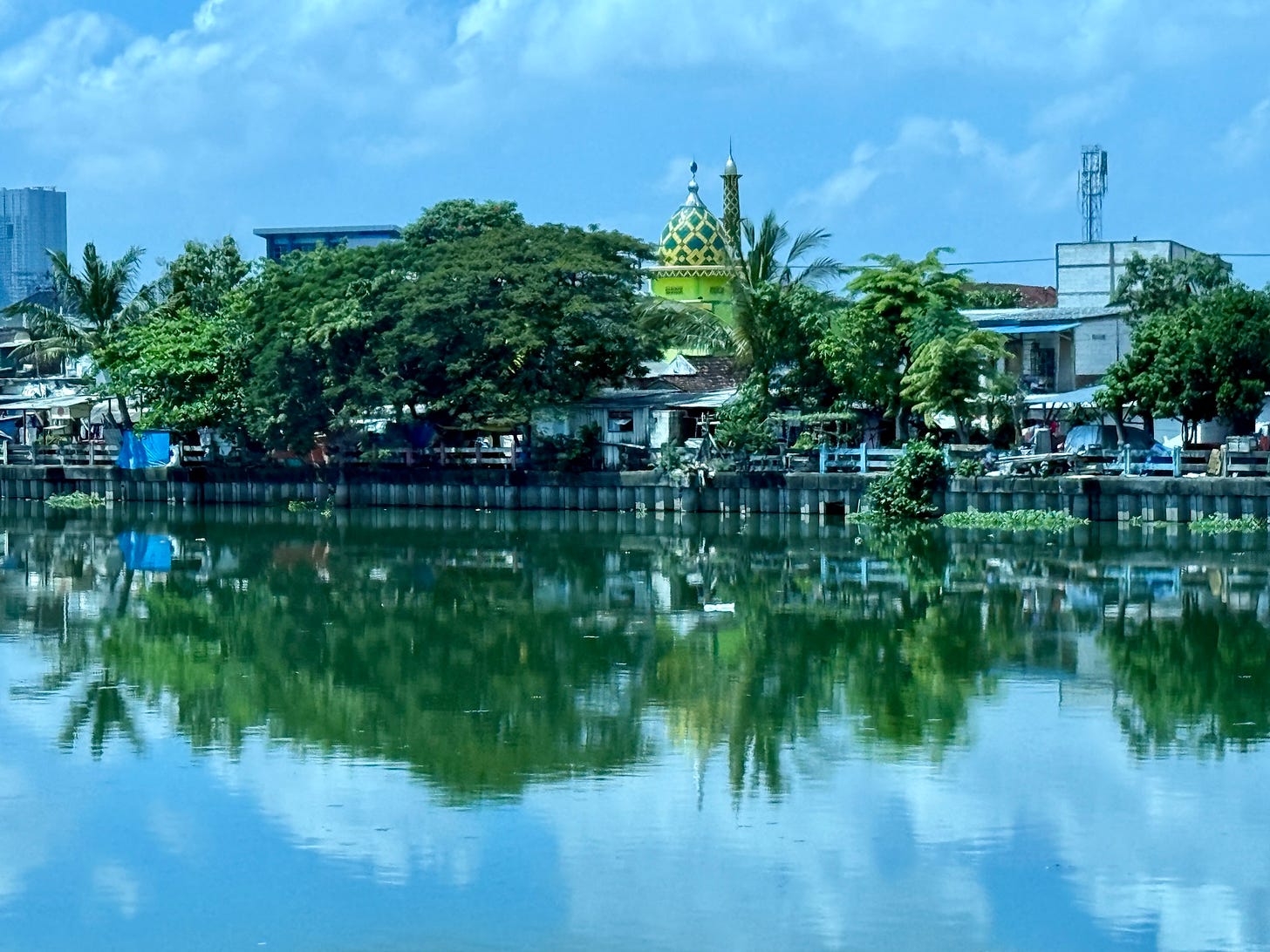

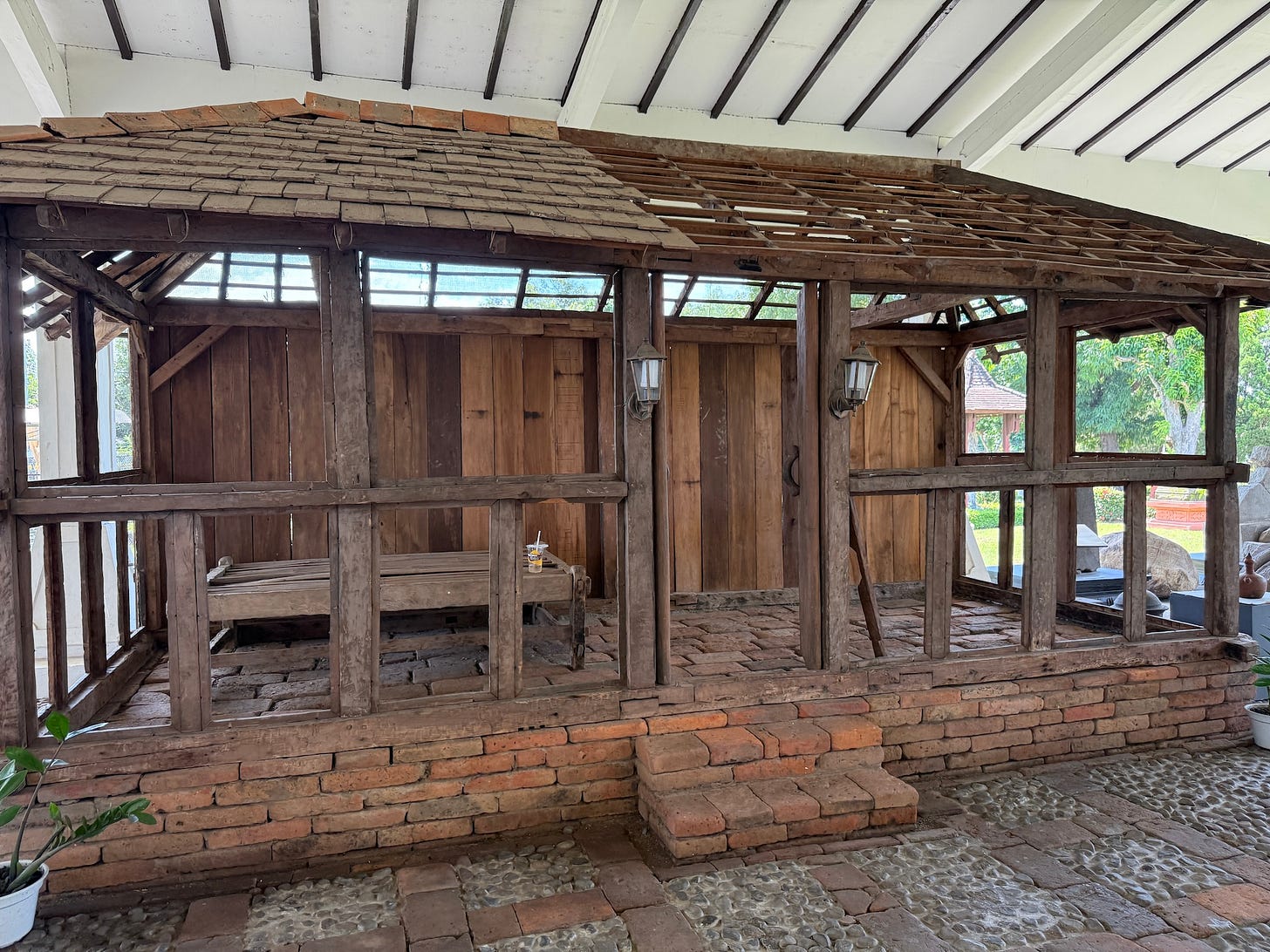
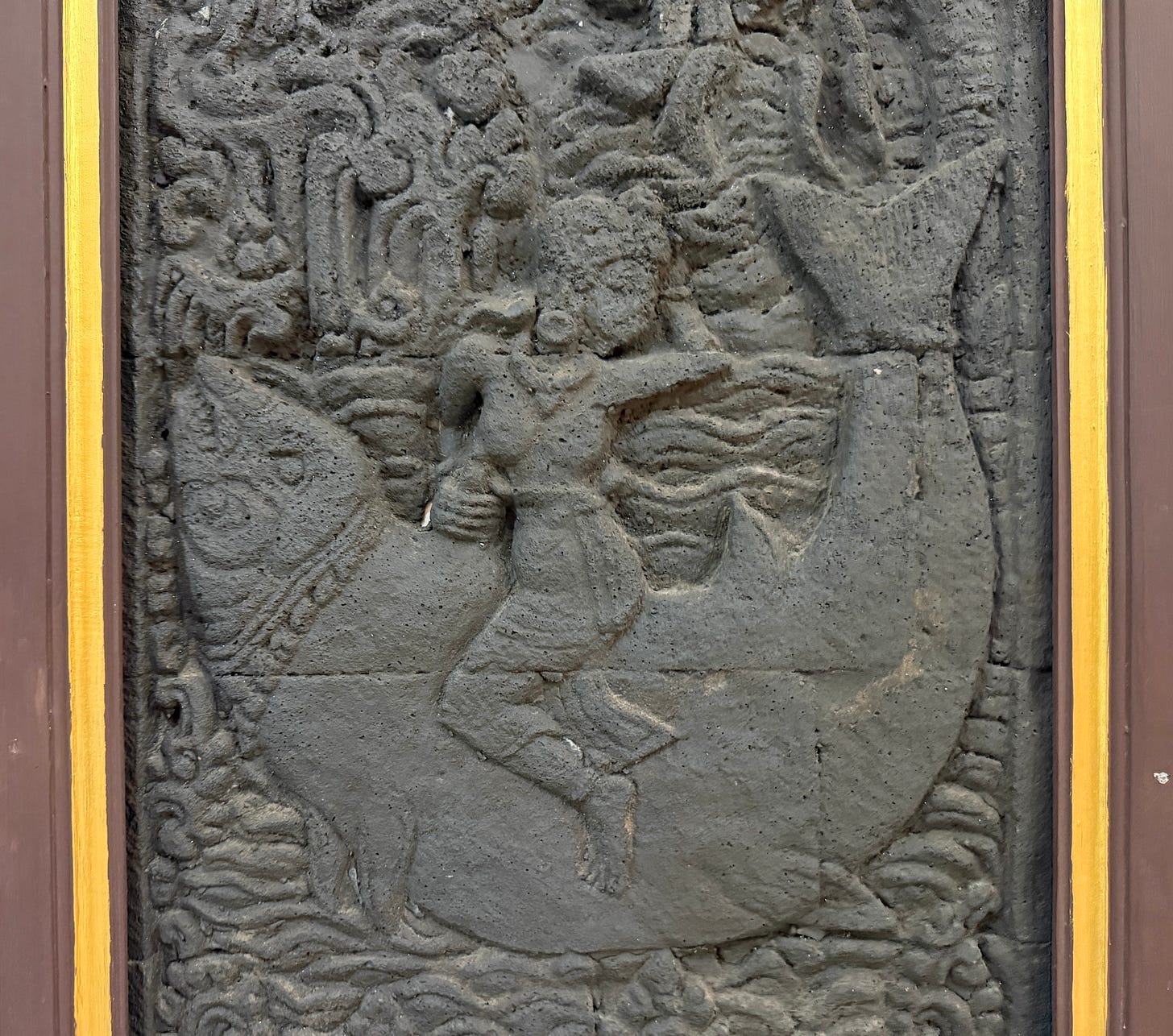
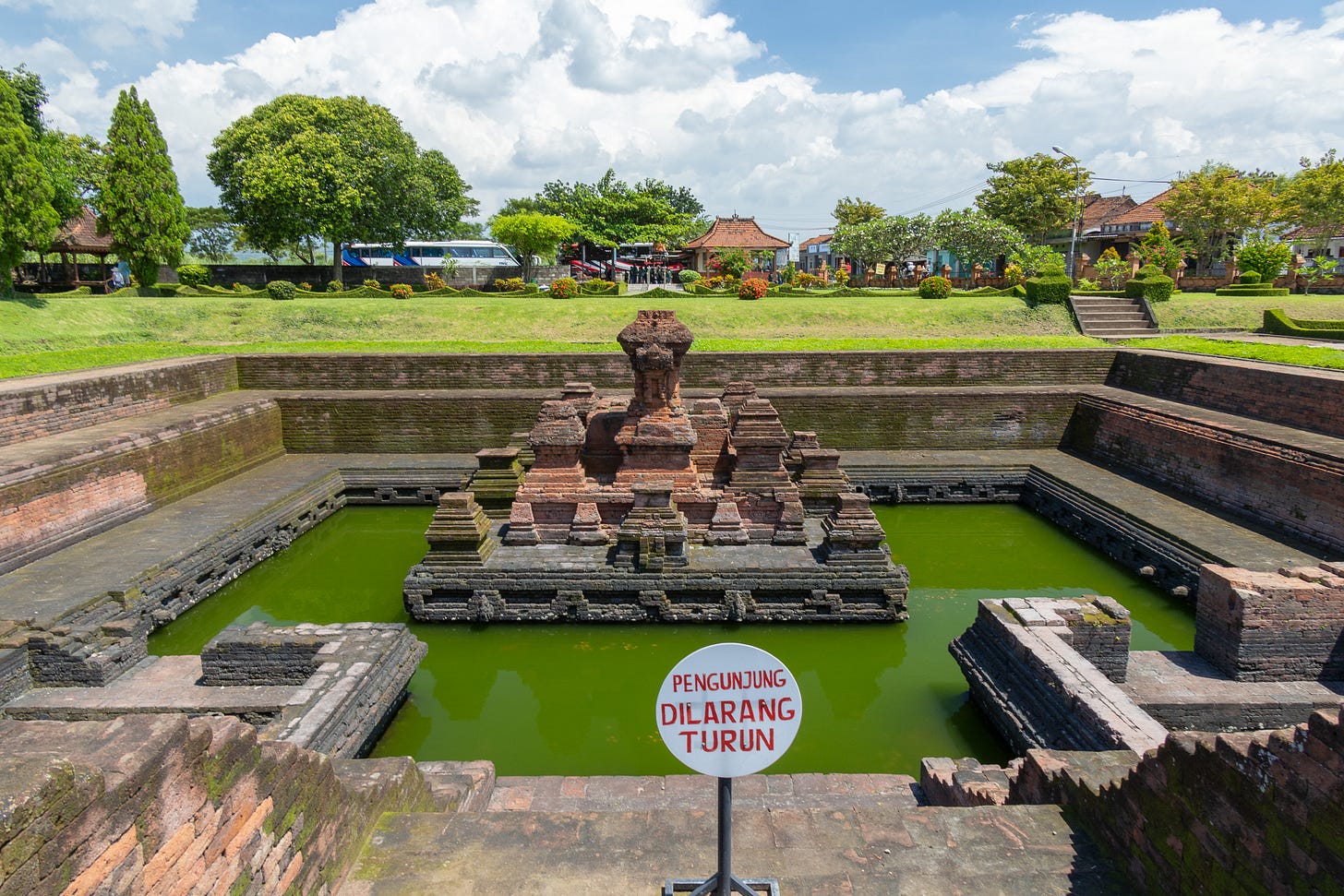
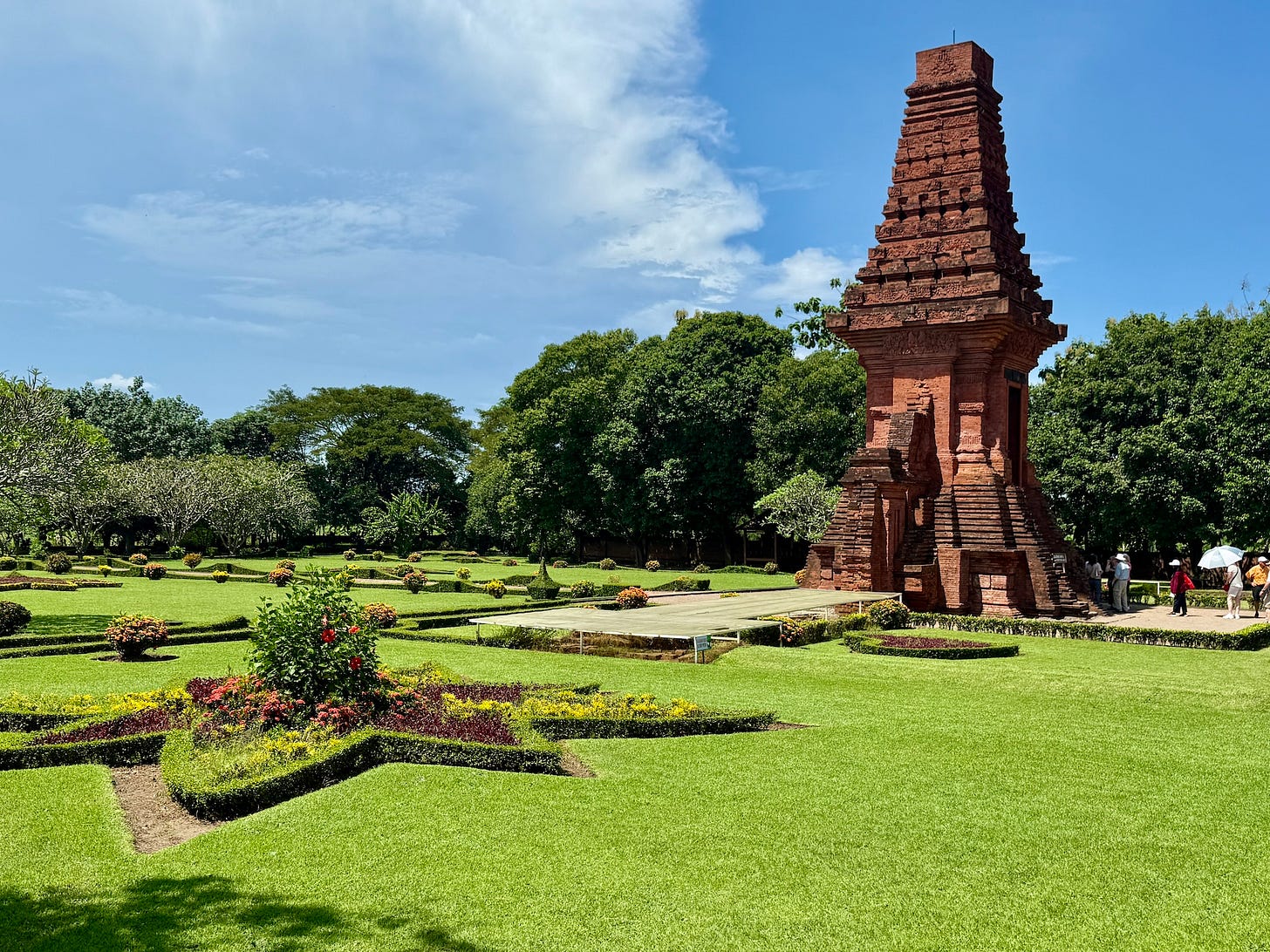

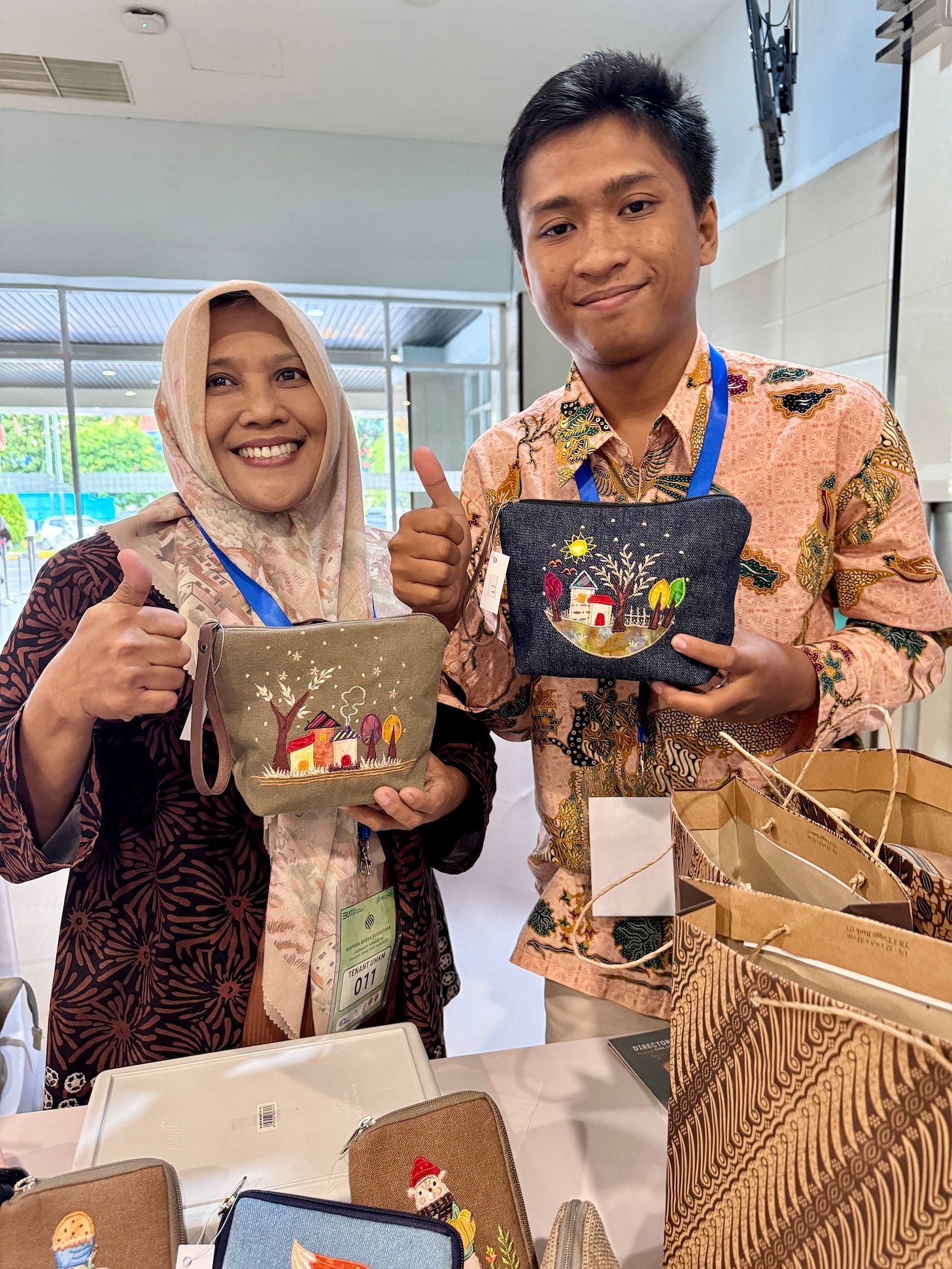
I am so overwhelmed with awe when you visit a place so beyond my knowledge that I’d never heard of it! It brings me such joy to learn about different places and cultures! Such a wonderful entry!
Your pictures and commentary are fabulous.